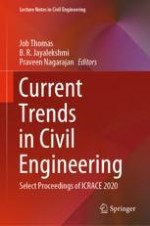
2021 | OriginalPaper | Buchkapitel
Treatment of Well Water Contaminated with Septic Tank Effluent Using a Modified Compacted Sand Filter
verfasst von : M. Harikumar, P. Sikha, M. P. Amrutha, F. Jamshiya, T. Arathi
Erschienen in: Current Trends in Civil Engineering
Verlag: Springer Singapore
Aktivieren Sie unsere intelligente Suche, um passende Fachinhalte oder Patente zu finden.
Wählen Sie Textabschnitte aus um mit Künstlicher Intelligenz passenden Patente zu finden. powered by
Markieren Sie Textabschnitte, um KI-gestützt weitere passende Inhalte zu finden. powered by